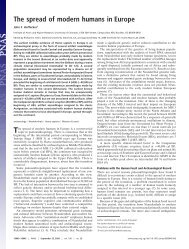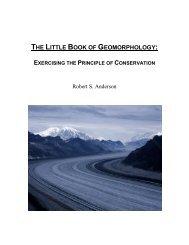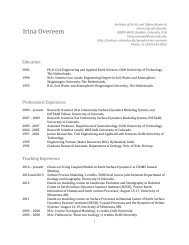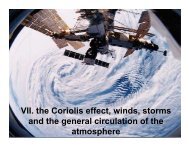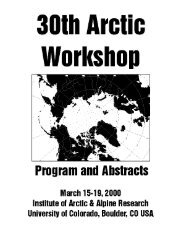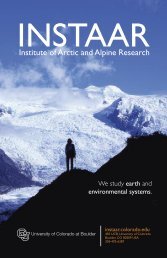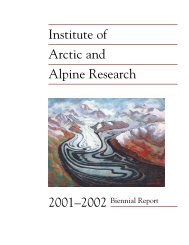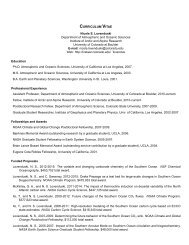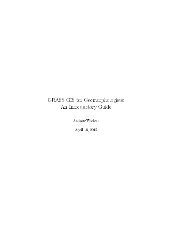Glacier Mass Balance and Regime: Data of Measurements and ...
Glacier Mass Balance and Regime: Data of Measurements and ...
Glacier Mass Balance and Regime: Data of Measurements and ...
Create successful ePaper yourself
Turn your PDF publications into a flip-book with our unique Google optimized e-Paper software.
Golubev <strong>and</strong> Dyurgerov, 1976). Here errors recognized by value as well, including: a) gross (egregious)errors, usually large <strong>and</strong> obvious, which need to be identified <strong>and</strong> the observation eliminated, e.g.,incorrect methodology, mistake in transcription etc.; b) errors or uncertainties that can be treatedstatistically: r<strong>and</strong>om errors (e.g. measurement error), or systematic errors (e.g. bias in methodology).Application <strong>of</strong> this theory to measurements <strong>of</strong> glacier regime shows the primary importance <strong>of</strong>systematic errors, for every class. The main sources <strong>of</strong> gross errors are in connection with field work inbad weather <strong>and</strong> difficult environmental conditions, such as low temperature <strong>and</strong> atmospheric pressure,wind, snow fall, snow avalanches <strong>and</strong> so on (external errors). Additional error may be derived during theinstallment <strong>of</strong> equipment, measuring snow in pits, <strong>and</strong> probing deep <strong>and</strong> dense snow frequently (∅strem<strong>and</strong> Haakensen, 1999; Jansson, 1999). Only experienced field workers <strong>and</strong> data collectors mayrecognize such errors, take the necessary precautions, <strong>and</strong> make corrections immediately after the surveyis done. Any change <strong>of</strong> field personal may introduce new errors. This is very subjective matter <strong>and</strong> it isdifficult to apply reasonable criteria to reduce such errors. Measurement values exceeding 3 st<strong>and</strong>arddeviation from a mean or expected value have been rejected in an earlier work (Golubev <strong>and</strong> Dyurgerov,1976).∅strem <strong>and</strong> Brugman (1991) conclude that any practical method <strong>of</strong> measurement in the fieldmust include intuitive as well as statistical methodologies. The intuitive skill is obtained only by muchexperience with the glaciers being measured.The sources <strong>and</strong> magnitude <strong>of</strong> errors may be affected by climate conditions, surface topography,glacier size, <strong>and</strong> inaccessibility <strong>of</strong> glacier area for measurements (avalanches, crevasses). A combination<strong>of</strong> these factors provides a reasonable answer as to why there is no appropriate consensus scheme toestimate the entire range <strong>of</strong> errors in glacier mass balance studies.2.2.3. Estimate <strong>of</strong> accuracy <strong>and</strong> variability in glacier mass balanceTo determine accuracy in mass balance components, the following is commonly applied:σ F= [(∂F/∂x) 2 σ x2+ (∂F/∂y) 2 σ y2+ …, (∂F/∂u) 2 σ u2)] 1/2 . (4)σ Fis the square-root error <strong>of</strong> function F <strong>and</strong> is assumed to be a measure <strong>of</strong> r<strong>and</strong>om error <strong>of</strong> uncorrelatedvariables x, y,…u. Application this to equations (1, 2) gives an estimate <strong>of</strong> the error <strong>of</strong> mass balance <strong>and</strong>seasonal components data at any single site i:2σb i= [(ρ i2σ •h2+ ∆h i2σ ρ )] 1/2 , (5)or in relative values,32



